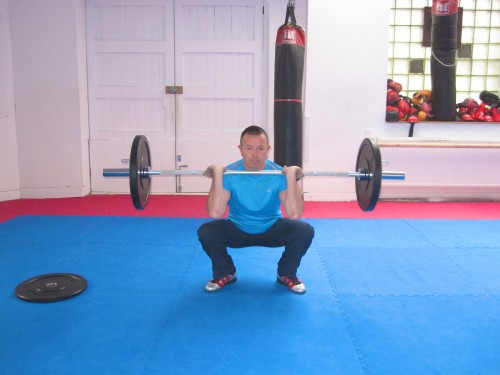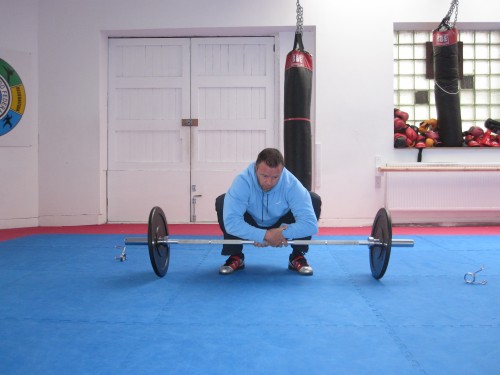Please, feel free to contact us via e-mail or by phone on 086 8338845
![]()
Thoughts and discussion on kettlebell training, strength and conditioning, Olympic lifting, fat loss, getting healthy and fit, NMT, core training, Pilates, mobility and anything else that goes with the above.

The above question is one i ask our students regularly? Recently i received an answer from a student who just completed a fitness instructor course, 'squat to 45 degrees'. Now it's not his fault, this is the rubbish that is taught in most fitness instructor schools.
Now don't get me wrong, some people may only be able to squat to 45 degrees, that's fine. Which brings me to my first point when we discuss this issue. At FFI we teach, squat as low as your body will permit in neutral spine and with good biomechanics. Secondly it depends on what you want to achieve with your squat. For example if you are in a power microcycle of your training programme, you might be just performing partial jumping squats. On the other hand you might be performing full deep squats in your off season strength phase.
So why can some people deep squat and others struggle to get to 45 degrees?
Well it's a combination of lack of mobility and strength mainly. Lack of mobility in the ankles, knees, hips, pelvis and spine. Lack of strength in all of the above, legs and back.
What should you do to increase your squat?
Firstly at FFI we promote mobility first before strength. You can still use weight to help improve your mobility. Learn how to stretch your ankle knee, hip and spinal area safely. Better still have a therapist do muscle energy techniques (MET) for you. This is a great way to improve mobility and flexibility, if you can't find a good therapist, self stretching will do just fine.
Secondly grab a light to moderate kettlebell and front squat to goblet squat with it. The kettlebell will assist you in getting down into the goblet position. While in goblet squat position push your knees outwards with your elbows. This will help stretch your adductors (inner thighs). Try to lift your sternum to the sky and lengthen your spine.
Also try to tilt your pelvis forwards (anterior). Tiliting the pelvis forwards will help you keep your natural lumbar curve, strengthen your lower back and stretch your hamstrings in the squat position. Keep your feet flat on the ground and equal in turnout at all times.
Try light barbell front squat static holds and over time you should be able to squat in neutral without using a barbell or kettlebell.

You may add weightless rounded back squats and over time work on lengthening your spine whilst in the deep squat position. Do some everyday. The more you squat, the better you become.
Happy squatting
www.ffireland.com
www.kettlebellsireland.com
Copyright ©2025 Function & Fitness Ireland
Designed by Aeronstudio™